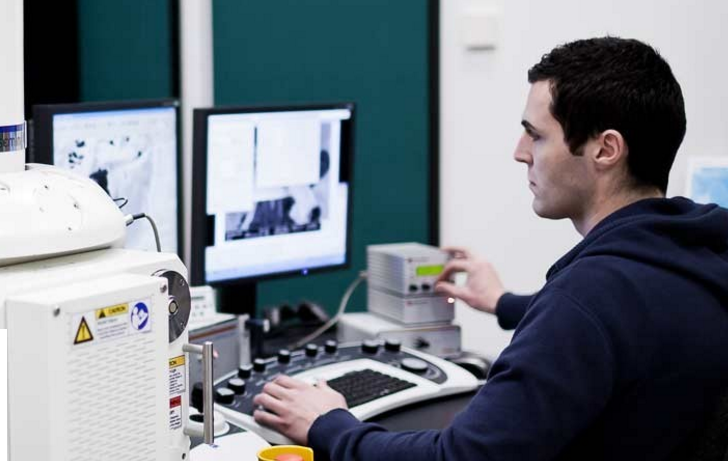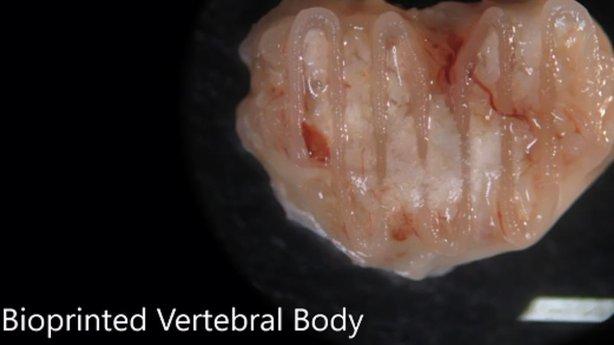 As you read about 3D printing, 4D printing, bioprinting, and learn about any number of outrageous innovations coming forth at a fairly constant rate, you may wonder what the point truly is in some of these exercises and whether they will have a realistic impact. Some of the work going on in labs sounds amazing but also sometimes far-fetched, from scientists spinning capillaries on a cotton candy machine to researchers bioprinting liver tissue. The ultimate goal, however, is to begin fabricating organs for the most patient-specific care imaginable—and to eliminate long waiting lists where patients all too often die before receiving organs from donors.
As you read about 3D printing, 4D printing, bioprinting, and learn about any number of outrageous innovations coming forth at a fairly constant rate, you may wonder what the point truly is in some of these exercises and whether they will have a realistic impact. Some of the work going on in labs sounds amazing but also sometimes far-fetched, from scientists spinning capillaries on a cotton candy machine to researchers bioprinting liver tissue. The ultimate goal, however, is to begin fabricating organs for the most patient-specific care imaginable—and to eliminate long waiting lists where patients all too often die before receiving organs from donors.
Bioprinting is not always about reaching for the holy grail of replicating organs though, as evidenced by a recent study in Ireland where scientists have developed a method for making new bones. Funded by the Science Foundation Ireland at the AMBER Materials Science Centre, which is hosted at Trinity College Dublin, this work, amidst many other amazing projects they are working on, is meant to end the need in the future for bone grafts whether through autografting (moving the patient’s own bone material) or allografting (transplanting bone from a donor).
With millions of people each year in need of bone grafts due to cancerous tumors, complex fractures, and even head traumas or dental issues after tooth loss or extenuating issues, obviously a less painful, more successful, and affordable method in replacing complex bone defects would be welcomed by both patients and medical professionals.
This type of customized, patient-specific care in repairing bone would also eliminate the need for donors as cartilage templates are made in the customized shape of the patient’s bone and then used in place of what typically would have been a bone graft.
Here, regeneration is of course the key as in with a traditional bone graft—and this is exactly what makes repairing bones so possible. In the new method the bioprinted materials and patient’s stem cells are inserted subcutaneously. In time, the bone regenerates and with its own blood vessels, becomes fully functioning again. The researchers see this level of bioprinting as one that will impact a wide range of applications in surgery from that of the head, jaw, spine, and more, to also offering positive benefit in both hip and knee replacements.
The team has tested their new method out and was pleased to find that bone became fully functional again as the biomaterials were placed underneath the skin.
“This is a new approach to tissue and organ engineering and we’re very excited,” said Professor Daniel Kelly, team lead for this research. “Our research offers real hope in the future for patients with complex bone trauma or large defects following removal of a tumor.”
The new method was also presented in Advanced Healthcare Materials, outlined in the paper, ‘3D Bioprinting of Developmentally Inspired Templates for Whole Bone Organ Engineering,’ by Andrew C. Daly, Gráinne M. Cunniffe, Binulal N. Sathy, Oju Jeon, Eben Alsberg, and Daniel J. Kelly.
In their research paper, the scientists point out that while the bioprinting of human organs is not yet possible with the technology at hand, they have come up with a ‘precursor’ that allows for a more immediate way to create biomaterials to repair bone, using cartilage templates to be ‘engineered’ in the lab with stem cells.
“As a proof-of-principal, multiple-tool biofabrication is used to engineer a mechanically reinforced cartilaginous template mimicking the geometry of a vertebral body, which in vivo supported the development of a vascularized bone organ containing trabecular-like endochondral bone with a supporting marrow structure,” state the researchers in their paper.
One of the challenges in this work, according to the team, was in seeing that this soft, new tissue would actually be able to work within the human body. It was central to the method to see that mechanical support would be provided by the growing new bone, in whichever surgical context it was applied, as they do expect that ‘precursors’ such as these could work in other areas of the body and in the future, in creation of other organs that would be able to grow to maturity. Numerous bio-inks made with hydrogel were used as the researchers introduced a range of microchannels which they stated were inspired by real cartilage networks that are apparent as bone grows naturally.
“This bioprinting approach could also be used in the development of the next generation of biological implants for knee and hip replacements. Our next stage of this process is to aim to treat large bone defects and then integrate the technology into a novel strategy to bioprint new knees,” said Kelly.
As the ever-growing industry of 3D printing progresses with innovations coming from nearly every direction, the field of bioprinting seems to expand at an even more accelerated rate. And while making a more streamlined Rolls Royce is very important is to some, as well as shooting off into space in a more efficient 3D printed rocket, there’s simply no arguing that what is happening within the medical field is more important. What researchers are offering up today, on their way to creating real treatments for chronic diseases, not to mention bioprinting human organs in the near future, is far beyond inspiring. These breakthroughs bring hope in large doses, with many already creating a greater quality of life for those who were suffering previously, and in some cases saving lives altogether. Discuss further over in the Dublin Researchers Bioprinting Bone forum at 3DPB.com.
[Sources: RTE News; Silicon Republic]Subscribe to Our Email Newsletter
Stay up-to-date on all the latest news from the 3D printing industry and receive information and offers from third party vendors.
Print Services
Upload your 3D Models and get them printed quickly and efficiently.
You May Also Like
Heating Up: 3D Systems’ Scott Green Discusses 3D Printing’s Potential in the Data Center Industry
The relentless rise of NVIDIA, the steadily increasing pledges of major private and public investments in national infrastructure projects around the world, and the general cultural obsession with AI have...
3DPOD 260: John Hart on VulcanForms, MIT, Desktop Metal and More
John Hart is a Professor at MIT; he´s also the director of the Laboratory for Manufacturing and Productivity as well as the director of the Center for Advanced Production Technologies....
Etsy Design Rule Change Reduces Selection of 3D Printed Goods
Online marketplace Etsy has implemented a rule change requiring all 3D printed goods on the site to be original designs. The update to the site’s Creativity Standards states, ¨Items produced using...
E-Beam OEM Wayland Additive Partners with USC Racing to 3D Print Titanium Exhaust Collector
Every year, standards organization SAE International holds a competition called Formula SAE, in which students from both undergraduate and graduate programs design, build, and race small formula-style race cars. For...




































